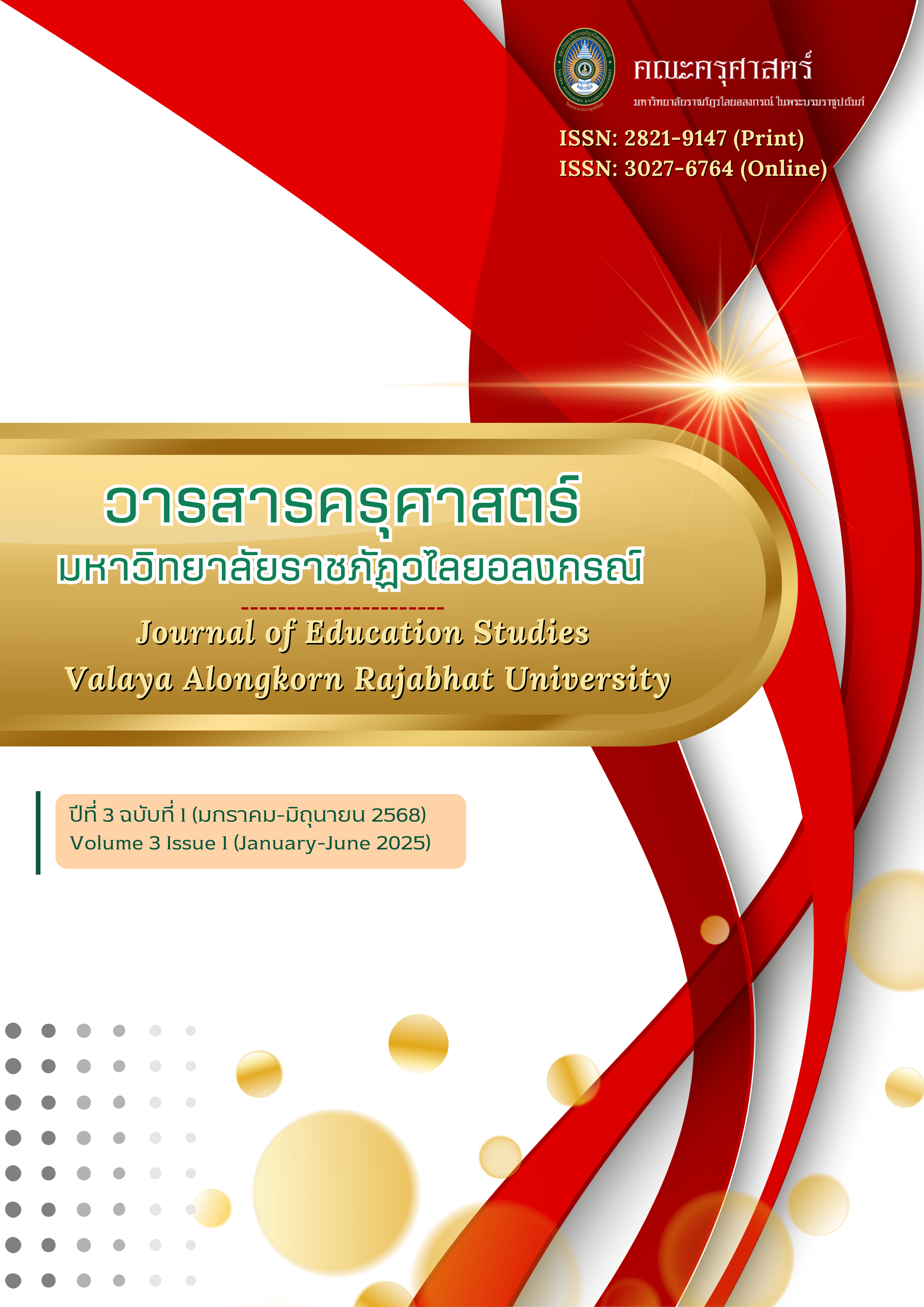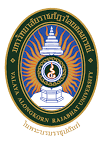ความเหลื่อมล้ำทางดิจิทัลในการศึกษาวิทยาศาสตร์ในอาเซียน
คำสำคัญ:
ความเหลื่อมล้ำ, ระบบดิจิทัล, กลุ่มประเทศอาเซียน, การจัดการเรียนรู้ทางวิทยาศาสตร์บทคัดย่อ
บทความนี้ เป็นการสังเคราะห์งานวิจัยโดยมีวัตถุประสงค์เพื่อศึกษาความเหลื่อมล้ำทางดิจิทัลในการศึกษาวิทยาศาสตร์ในอาเซียนช่วงระยะเวลา 5 ปี (ค.ศ. 2019-2023) ซึ่งมีจำนวนงานวิจัย 851 ฉบับ จึงทำการศึกษาเนื้อหาจากวิจัยโดยใช้วิธีการทบทวนวรรณกรรมอย่างเป็นระบบ ซึ่งมี 4 ขั้นตอน มีจำนวนบทความที่ผ่านเกณฑ์คัด และใช้ในการศึกษาครั้งนี้มีจำนวน 50 ฉบับ ผลการศึกษาพบว่า สามารถแบ่งหมวดหมู่ของงานวิจัยออกเป็น 3 หมวดหมู่ คือ 1) สถานการณ์ความเหลื่อมล้ำทางดิจิทัลต่อการศึกษาวิทยาศาสตร์ในอาเซียน 2) ผลกระทบที่เกิดจากความเหลื่อมล้ำทางดิจิทัลต่อการศึกษาวิทยาศาสตร์ในอาเซียน และ 3) แนวทางในการแก้ไขปัญหาความเหลื่อมล้ำทางดิจิทัลในการศึกษาวิทยาศาสตร์ในอาเซียน ผู้วิจัยได้ร่วมกันวิเคราะห์ผลข้อมูลเชิงปริมาณ โดยการนับความถี่และคำนวณค่าสถิติร้อยละ ของข้อมูล และข้อมูลเชิงคุณภาพจากการศึกษาสถานการณ์ความเหลื่อมล้ำภายในกลุ่มประเทศอาเซียน ผลที่ได้จากการศึกษาพบว่าตลอดระยะเวลา 5 ปี ความเหลื่อมล้ำทางดิจิทัลในการศึกษาวิทยาศาสตร์ในอาเซียน มีสาเหตุสำคัญมาจากการแพร่ระบาดของเชื้อโควิด-19 และความพร้อมของอุปกรณ์อิเล็กทรอนิกส์ทางการศึกษาไม่เพียงพอต่อผู้เรียน ซึ่งส่งผลกระทบต่อการเรียนรู้ทางวิทยาศาสตร์ของผู้เรียน สำหรับแนวทางในการแก้ไขปัญหาความเหลื่อมล้ำทางดิจิทัลในการศึกษาวิทยาศาสตร์ในอาเซียน ทำได้โดยการที่รัฐบาลช่วยเสริมสร้างให้มีความมั่นคงทางสังคมและเศรษฐกิจ เพื่อยกระดับมาตรฐานการศึกษาให้มีคุณภาพที่ดียิ่งขึ้น
เอกสารอ้างอิง
ธนกร วรพิทักษานนท์ และศยามล เจริญรัตน์. (2565). ผลกระทบของความเหลื่อมล้ำในการเข้าศึกษาต่อระดับอุดมศึกษาของนักเรียนไทย. วารสารวิจัยวิชาการ, 5(6), 203-216. สืบค้นจาก https://doi.org/10.14456/ jra.2022.146
รัชวดี แสงมหะหมัด. (2560). ความเหลื่อมล้ำทางการศึกษา: คุณภาพสังคมที่คนไทยมองเห็น: วารสารรัฐศาสตร์และรัฐประศาสนศาสตร์, 8(1), 33-36.
Ab-Rahim, R., & Jing, A. H. J. (2020). Information and Communication Technology and Economic Growth in ASEAN-5 Countries. Journal of Public Administration and Governance. 10(2), 20-30.
Chin, P. L. (2021). Lessons (to be) Learned? An Investigation of Online Learning during the COVID-19 School Closures in a Brunei Primary School. International Journal of Education, Training and Learning, 5(1), 1-18.
Darusalam, D., Janssen, M., Sohag, K., Omar, N., & Said, J. (2021). The Influence of ICT on the Control of Corruption: A Study Using Panel Data from ASEAN Countries. International Journal of Public Administration in the Digital Age, 8(1), 1-16.
Debs, M., & Cheung, S. H. (2020). Structure-reinforced privilege: Educational Inequality in the Singaporean primary school choice system. Retrieved from https://osf.io/preprints/edarxiv/sc6m9
Emma Duester. (2022). The geopolitical and socioeconomic factors of digitization in Vietnam: Technology adoption in the art and cultural sector during the COVID-19 Pandemic. Data and Information Management, 6(2), 1-6.
Kusumastuti, A., & Nuryani, A. (2020). Digital Literacy Levels in ASEAN (Comparative Study on ASEAN Countries). In Proceedings of the 13th International Interdisciplinary Studies Seminar, IISS 2019, 30-31 October 2019 (pp.1-11). Malang, Indonesia.
Lim, S. S., & Shah, S. Z. (2022). Bridging Singapore's Digital Divides: Making our Smart Nation Smarter. Social Context, Policies, and Changes in Singapore Beyond the First 50 Years, 1(1), 439–449. Retrieved from https://doi.org/10.1142/12571
Mendelson, A. (2021). Myanmar students boycott classes following school reopening. Retrieved from https://www.aljazeera.com/news/2021/11/17/myanmar- students-boycott-classes-following-school-reopening#:~:text=Since%20the%20military%20announced%20the,be%20subject%20to%20an%20attack
Mesa, P. (2019). Measuring Education Inequality in the Philippines. University of the Philippines, School of Economics (UPSE), 2007(4).
Ministry of Education and Sports (MoES). (2021). Lao Education and Sport Sector Development Plan 2021-2025. Vientiane: Ministry of Education and Sports.
Mohammad, S., Yamani, R., & Umar, S. (2021). Covid-19 Pandemic and Addressing Digital Divide in Malaysia. Journal of Information Systems and Digital Technologies, 3(2), 29-49.
Mukherji, P., Chatterjee, R., Sen, A., Kapoor, H., & Sambhar, A. (2022). Digital Maturity Assessment-Lao PDR. UNDP. Retrieved from https://www.undp.org/sites/g/files/zskgke326/files/2022-08/UNDP_LaoPDR_DMA_2022.pdf
Nanthakorn, B., Ractham, P., & Kaewkitipong, L. (2023). Double burden: Exploring the digital divide in the Burmese educational system following the 2021 coup d’etat and the COVID-19 pandemic. Computers in Human Behavior Reports, 11(1), 1-15.
Nguyen, D. D., Thu, H. P., & Ha, M. T. C. (2022). Tackling Unequal Access to Digital Education in Viet Nam during the COVID-19 Pandemic. Asian Development Bank Institute ADBI Development Case Study, 3(1), 1-12.
Nietschke, Y., & Dabrowski, A. (2023). Technology in education: a case study on Lao People's Democratic Republic. Unesco Global Education Monitoring Report, 1(6), 4-8.
Noor, W., & Rahmawati, A. (2021). The role of asean in facing the fourth industrial revolution (Casestudy: Education Disparity Between Singapore and Indonesia). JURNAL Studi Diplomasi dan Keamanan, 13(2), 1-24.
Runde, D., Bandura, R., & Lee, R. (2022). Digitalizing Laos: Improving Government Transparency, the Business Environment, and Human Capital. Center for Strategic and International Studies, 3(1), 4-38.
Sanger, C. S. (2020). Inclusive Pedagogy and Universal Design Approaches for Diverse Learning Environments. Diversity and Inclusion in Global Higher Education Lessons from Across Asia, 1(1), 31-71. Retrieved from https://doi.org/10.1007/978-981-15-1628-3
Sideth Chhin. (2021). Access To Education in Cambodia During the Covid-19 Global Pandemic [Master dissertation, Flinders University]. flex. flinders. Retrieved from https://flex.flinders. edu.au/file/a66f5836-5bf9-4ca7-9d81912534df0dc3/1/ChhinThesis2021.pdf
Sity Daud. (2018). Covid-19 Pandemic and Addressing Digital Divide in Malaysia. Journal of Information Systems and Digital Technologies, 3(2), 29-49. Retrieved from https://doi.org/10.31436/jisdt.v3i2.205
Teras, M., Suoranta, J., Teras, H., & Curcher, M. (2020). Post-Covid education and education technology solutionism: A seller’s market. Postdigital Science and Education, 2(1), 863-878.
Thanh Nien News. (2021). In 2019–2021, about 1.5 million students in Viet Nam did not have access to online education. Tackling Unequal Access to Digital Education in Viet Nam during the COVID-19 Pandemic.
UNESCO, (2020). Inclusion and education: All means al. Global education monitoring (GEM) Report 2020 Inclusion and education, 7(1), 1-59.
World Bank. (2023). Gross domestic product 2022. Retrieved from https://databankfiles.worldbank.org/public/ddpext_download/GDP_PPP.pdf






 คู่มือขั้นตอนการส่งบทความ
คู่มือขั้นตอนการส่งบทความ




